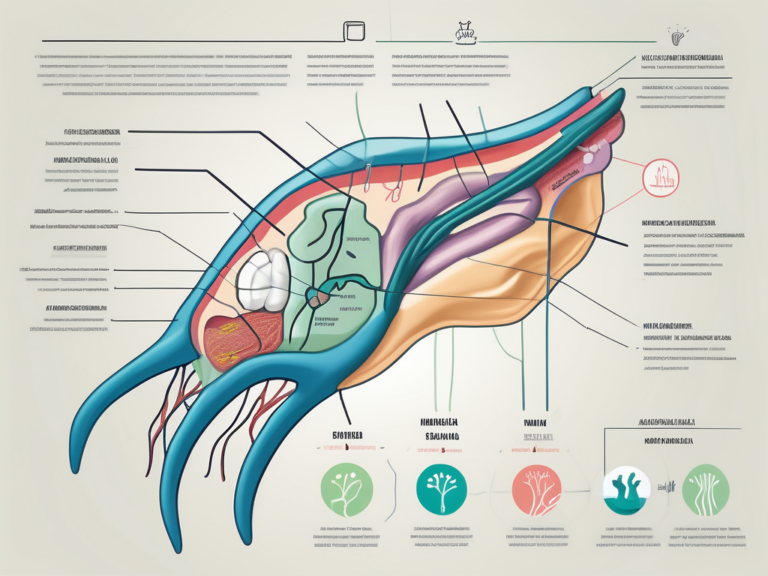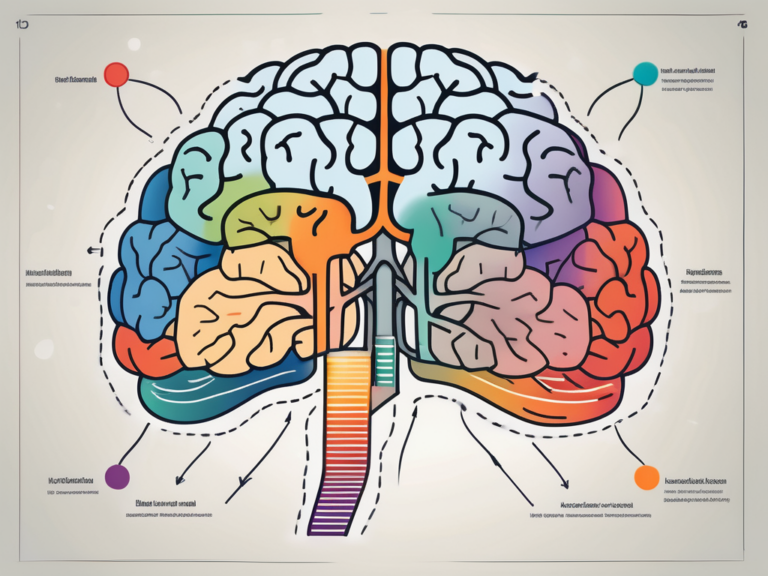Explaining vasovagal to kids
In this article, we will delve into the topic of vasovagal syncope, aiming to provide a comprehensive understanding of this condition tailored specifically for kids. By using age-appropriate language and visual aids, we can demystify the complexities of vasovagal syncope and empower children with knowledge and reassurance. Let’s begin our exploration!
Understanding Vasovagal Syncope
Before we delve deeper into the specifics of vasovagal syncope, let’s explore some additional details about this intriguing condition. Vasovagal syncope, also known as neurocardiogenic syncope, is a type of fainting spell that occurs when there is a sudden drop in blood pressure and heart rate. This phenomenon is often described as a reflex triggered by the vagus nerve, which plays a crucial role in regulating various bodily functions.
When a person experiences vasovagal syncope, the vagus nerve becomes overstimulated, leading to a series of physiological responses. These responses include a decrease in heart rate and the widening of blood vessels, ultimately causing a reduction in blood flow to the brain. As a result, the individual may lose consciousness temporarily, typically followed by a quick recovery once blood flow is restored to normal levels.
What is Vasovagal Syncope?
Simply put, vasovagal syncope occurs when the body’s autonomic nervous system, particularly the vagus nerve, reacts excessively to certain triggers. This exaggerated response can be set off by a variety of factors, such as emotional stress, intense pain, dehydration, or sudden changes in posture. Understanding these triggers is essential in managing and potentially preventing episodes of vasovagal syncope.
It’s fascinating to note that while vasovagal syncope is often considered a benign and self-limiting condition, it can significantly impact an individual’s quality of life. The unpredictability of fainting spells may lead to anxiety and fear of potential episodes, prompting lifestyle modifications and medical interventions to mitigate the risk of syncope.
How Common is Vasovagal Syncope in Children?
Vasovagal syncope is not uncommon in children, with studies suggesting that approximately 15-20% of pediatric patients may experience fainting spells related to this condition. While the prevalence of vasovagal syncope in children is noteworthy, it’s essential to recognize that most cases are transient and resolve as children grow older.
Breaking Down the Science
Now that we have a basic understanding of the condition, let’s delve deeper into the intricate scientific aspects behind vasovagal syncope. By unraveling the complexities of this phenomenon, children can gain a profound insight into the remarkable mechanisms at play within their own bodies.
One fascinating element to explore is the intricate dance orchestrated by the autonomic nervous system during a vasovagal syncope episode. This system, responsible for regulating involuntary bodily functions, swings into action when triggered, showcasing a delicate balance between the sympathetic and parasympathetic branches. Understanding how these branches interact can shed light on the body’s remarkable ability to adapt and respond to various stimuli.
The Role of the Vagus Nerve
At the heart of vasovagal syncope lies the vagus nerve, a crucial player in the body’s intricate symphony of communication and control. This remarkable nerve, also known as the “wandering nerve,” meanders through the body, connecting the brain to vital organs such as the heart, lungs, and digestive system. In the context of vasovagal syncope, the vagus nerve plays a pivotal role in orchestrating the body’s response to triggers, sending signals that can result in a cascade of physiological changes.
The Body’s Response to Vasovagal Syncope
When the vagus nerve is activated in response to a trigger, a choreographed sequence of events unfolds within the body. The heartbeat slows down, reducing the volume of blood pumped by the heart, while blood vessels dilate, causing a drop in blood pressure. This orchestrated symphony of changes can culminate in a transient interruption of blood flow to the brain, leading to a brief loss of consciousness. By understanding these intricate mechanisms, children can gain a newfound appreciation for the remarkable interplay of physiological processes that govern their everyday experiences.
Identifying Symptoms in Children
Recognizing the symptoms of vasovagal syncope is vital for both children and those around them. By understanding the physical and emotional signs, we can better manage and mitigate the impact of these episodes.
Vasovagal syncope, also known as fainting, is a common condition in children that can be triggered by various factors such as pain, fear, or standing up too quickly. It occurs when there is a sudden drop in heart rate and blood pressure, leading to a temporary loss of consciousness. While the episodes are typically brief and resolve on their own, it is essential to be aware of the signs to ensure the child’s safety and well-being.
Physical Signs of Vasovagal Syncope
Children experiencing a vasovagal syncope episode may exhibit certain physical signs. These can include dizziness, lightheadedness, feeling warm or flushed, and sometimes even nausea. Relaying these symptoms to a trusted adult or caregiver is crucial, as they can offer the necessary support and guidance.
In addition to the aforementioned symptoms, some children may also experience blurred vision, tunnel vision, or a sudden onset of cold sweats. These physical manifestations are the body’s way of signaling that a fainting episode may be imminent. Understanding these cues can help caregivers and healthcare providers intervene promptly and appropriately.
Emotional and Behavioral Indicators
The emotional and behavioral indicators of vasovagal syncope can vary from child to child. Some children may feel anxious or scared, especially after experiencing an episode. It is crucial to provide them with reassurance, emphasizing that this condition is generally harmless and manageable.
Children may also exhibit signs of confusion or disorientation following a fainting spell. This can be distressing for both the child and those around them. Offering a calm and supportive environment, as well as explaining the nature of vasovagal syncope in age-appropriate terms, can help alleviate their fears and prevent future episodes.
Simplifying the Concept for Kids
Explaining complex medical concepts to children requires a thoughtful approach. By using language and visual aids tailored to their age group, we can demystify vasovagal syncope and make it more accessible.
When it comes to discussing vasovagal syncope with kids, it’s important to break down the information into bite-sized pieces that are easy for them to digest. This condition, which can sound intimidating at first, is essentially like a brief pause that the body takes, almost like a quick power nap. By likening it to something familiar, children can better understand and relate to what’s happening in their bodies.
Using Age-Appropriate Language
When discussing vasovagal syncope, it’s essential to use words and phrases that resonate with children. For example, instead of using “temporary loss of consciousness,” we can say that sometimes the body takes a short nap or a little break. By framing it in relatable terms, children can better grasp the concept and feel more at ease.
Furthermore, incorporating storytelling elements can also be beneficial. By weaving a simple narrative about the body’s natural responses and how they work together, children can engage with the information on a more personal level. This storytelling approach can turn a complex medical concept into an exciting adventure of discovery for young minds.
Visual Aids to Explain Vasovagal Syncope
Visual aids, such as diagrams or illustrations, can greatly enhance a child’s understanding of vasovagal syncope. These visuals can illustrate the role of the vagus nerve and depict how it communicates with the heart and brain. Additionally, showing the sequence of events during a vasovagal syncope episode can help children visualize what’s happening inside their bodies.
Another effective visual aid can be a simple interactive model that children can manipulate to see how blood flow and oxygen delivery are affected during a vasovagal syncope episode. By allowing them to physically interact with the model, children can actively participate in the learning process and deepen their understanding of this medical condition.
Talking About Prevention and Management
Empowering children with strategies to prevent and manage vasovagal syncope episodes can provide them with a sense of control and confidence. While we cannot offer medical advice, we can suggest lifestyle changes and actions that may help reduce the occurrence and impact of these episodes.
It is important to create a supportive environment for children experiencing vasovagal syncope by involving family members, teachers, and caregivers in the management plan. Open communication and awareness among those close to the child can help create a safety net and ensure appropriate actions are taken in case of an episode.
Lifestyle Changes to Prevent Vasovagal Syncope
In some cases, certain triggers can be identified and avoided. Encouraging children to stay hydrated, get enough rest, and manage stress levels through techniques like deep breathing or relaxation exercises may help minimize the occurrence of vasovagal syncope episodes.
In addition to lifestyle changes, regular physical activity can also play a significant role in preventing vasovagal syncope. Engaging in activities that improve cardiovascular health and circulation, such as swimming or cycling, can help strengthen the body’s response to triggers and reduce the likelihood of fainting episodes.
What to Do During a Vasovagal Episode
Educating children about what to do during a vasovagal syncope episode is crucial. They should understand the importance of lying down or sitting with their head between their knees to promote blood flow to the brain. It’s also vital to emphasize that these episodes typically last only a few moments, and they will regain full consciousness shortly.
Furthermore, teaching children to recognize the warning signs of an impending vasovagal episode, such as lightheadedness or nausea, can empower them to take proactive measures. Encouraging them to alert a trusted adult, move to a safe location, and practice slow, deep breathing can help manage the symptoms and prevent a full fainting episode.
Addressing Kids’ Fears and Concerns
Understanding the fears and concerns that children may have about vasovagal syncope can help us provide the support they need. By addressing these anxieties openly and honestly, we can alleviate their worries and help them feel more secure.
When discussing vasovagal syncope with children, it is important to provide them with age-appropriate information. Explaining the condition in simple terms can help them grasp the concept without feeling overwhelmed. Additionally, using visual aids or diagrams can aid in their understanding of how vasovagal syncope affects the body’s response to certain triggers.
Reassuring Children About Vasovagal Syncope
Reassurance is key when it comes to addressing children’s fears about vasovagal syncope. It is essential to emphasize that this condition is generally harmless, and medical professionals can provide guidance and support. By emphasizing the manageable nature of vasovagal syncope, we can empower children and instill a sense of confidence.
Furthermore, sharing success stories of individuals living with vasovagal syncope can offer children a positive outlook on their own situation. Knowing that others have effectively managed their condition and led fulfilling lives can be reassuring and inspiring for young patients.
Encouraging Open Communication
Encouraging open communication between children, their families, and healthcare professionals is vital in managing vasovagal syncope. Children should feel comfortable discussing their concerns or any new symptoms they may experience, ensuring that proper support is readily available.
Creating a safe and non-judgmental environment where children feel heard and understood can foster trust and openness. Regular check-ins with healthcare providers can also help track any changes in symptoms or concerns, allowing for timely intervention and support.
Final Thoughts
In conclusion, vasovagal syncope may sound like a complex subject, but with the right approach, we can help children understand and manage this condition. By providing age-appropriate explanations, visual aids, and strategies for prevention and management, we empower children to navigate their journey with vasovagal syncope confidently. Remember, knowledge is power, and by providing support and education, we enable children to live their lives to the fullest, embracing their unique experiences.






